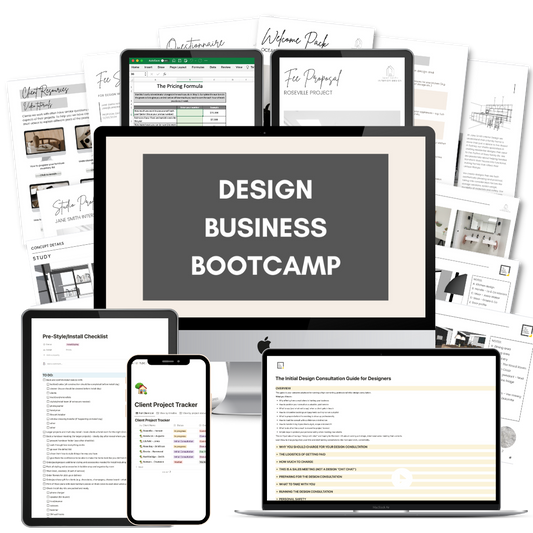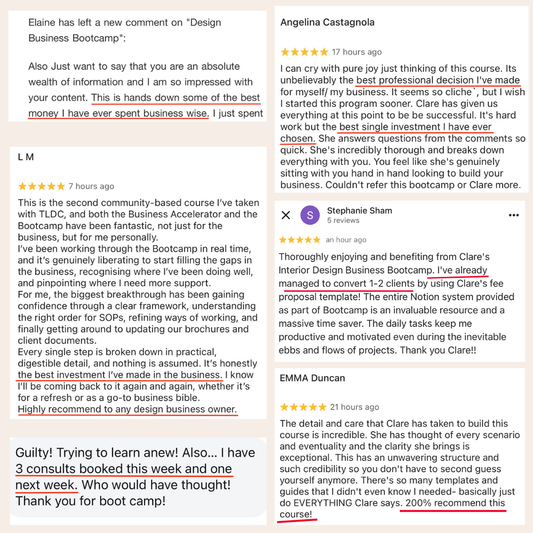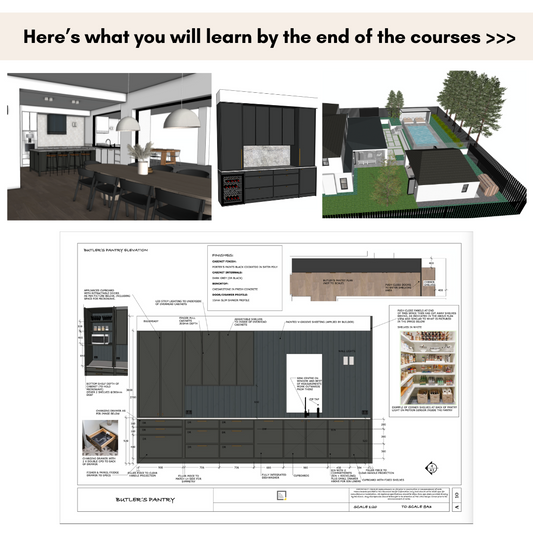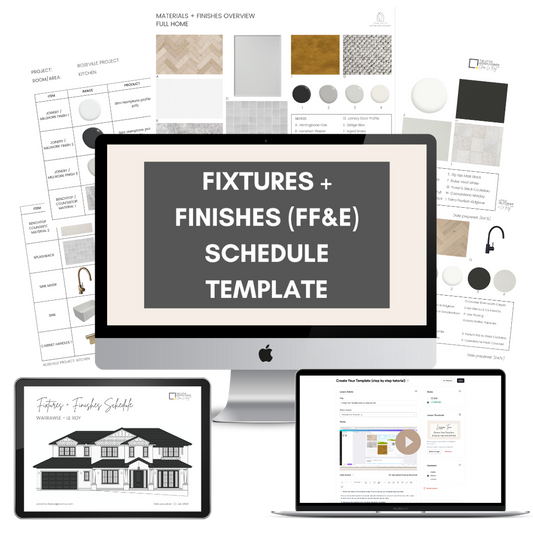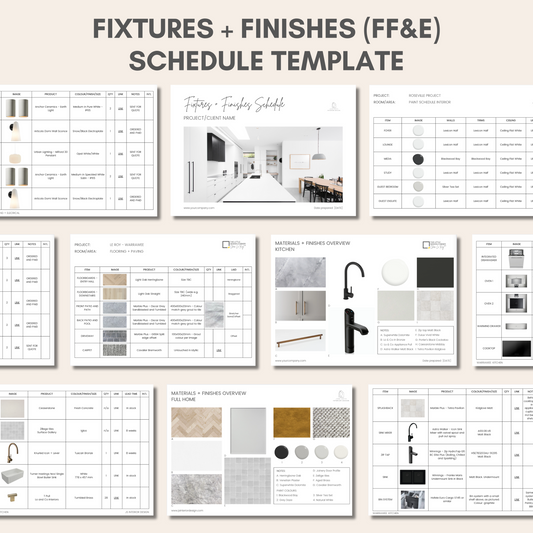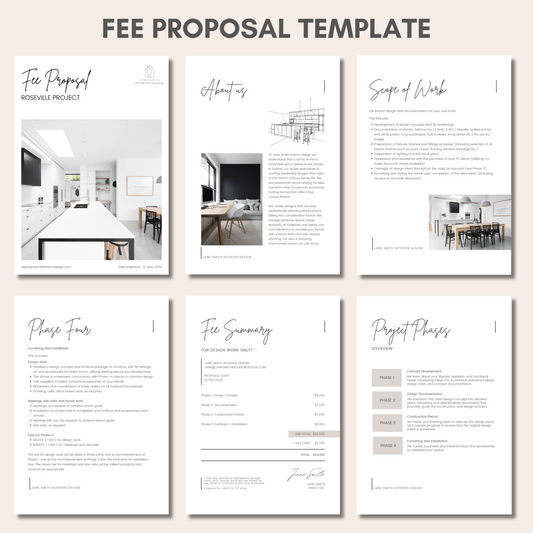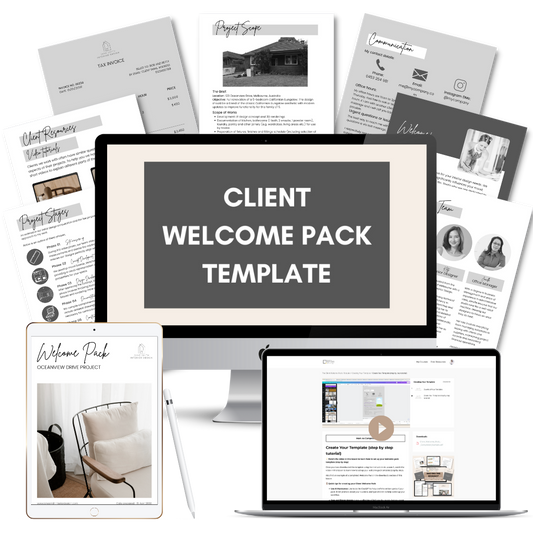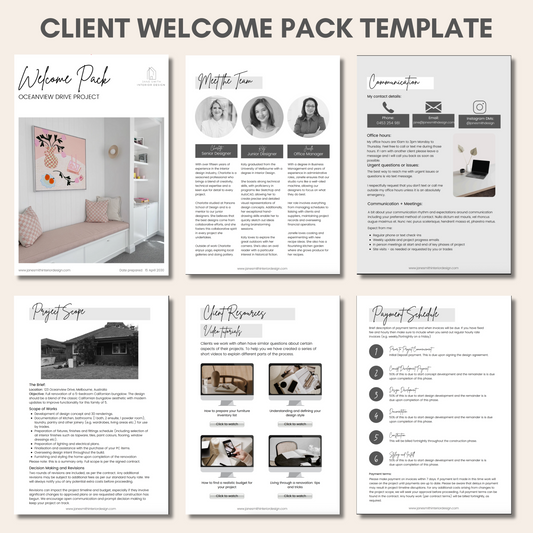Here's the story of two designers, Sarah and Emma, who launched their studios in Sydney in 2022.
Both designers were equally talented, equally ambitious and equally motivated but within three years, their businesses looked completely different.
One was capped, exhausted and second guessing herself and the other was respected, profitable and in control of her time.
The difference wasn’t their skill, it was their pricing model.
Sarah’s path: the hourly trap
Sarah charged $100 per hour. It felt simple, accessible and easy for clients to say yes to.
Clients liked it too because they could get design help without committing to a big upfront fee.
On paper, Sarah's first year looked fine:
- She billed around 25 hours per week (after admin, marketing and unpaid calls chewed up the rest)
- 25 hrs x $100 x 48 weeks = $120K billed.
- After software, insurance, marketing, car costs and other expenses she was left with roughly $80K (and that's before paying tax!)
But then the cracks started to show.
As Sarah gained experience, she worked faster. What once took six hours now took three. And under hourly billing that meant she earned less for being better.
If she worked quickly, she was punished financially.
If she slowed down, she felt dishonest.
Clients also began scrutinising her invoices line by line:
“Why did sourcing take so long?”
“Why did this revision need three hours?”
By year three:
- Her revenue plateaued around $140K.
- She was exhausted from chasing too many small jobs
- She felt stuck in an ethical bind i.e. either work slower and feel dishonest or work faster and earn less.
- Clients saw her as an hourly resource, not a trusted professional.
Sarah was burning out.
Emma’s path: pricing for outcomes
Emma took a different approach from the start and sold outcomes, not hours.
Her first package was a $10K concept and documentation set.
She landed six projects in her first year, bringing in $60K. Slower than Sarah, but her foundation was stronger.
By year three:
- She was getting more and more clients and had kept raising her fees.
- So she now charged $25K to $30K per project
- That meant she only needed 8 or 10 clients a year to hit $200K to $250K in revenue
- Her speed became an asset because the faster she worked, the more projects she was able to take on
- She reinvested in systems and outsourcing, which created more margin and freed her time
Clients saw Emma as a leader delivering outcomes, not someone to micromanage. She was also building a scalable, respected practice.
Why hourly billing is a bad business model
Here’s why Sarah got stuck with her hourly pricing model:
❌ It punishes efficiency because as you gain experience, you get faster. So eventually you earn less for being better
❌ It creates ethical tension because you find yourself slowing down to bill more or rounding up the time you spend working (don’t pretend you don’t!)
❌ It invites clients to micromanage you. They dissect every line item on your invoice and watch the clock instead of trusting you
❌ It caps your earning ceiling. Even if you charge $150/hr, your revenue is limited by the hours you can physically work. Once admin, marketing and unpaid calls are factored in, your “hourly” rate is often half what you think.
And here’s why Emma broke through:
✅ She was paid for outcomes, not time. So the faster she got, the more profitable she become
✅ Clients saw her as a leader driving results, not an hourly worker
✅ She had margin to grow because with fewer (higher value) clients and could hire help to scale faster and get back some time.
How to shift away from hourly billing
If you’re stuck billing hourly, here’s how to start moving off it:
-
Define the outcome. Clients don’t want 40 hours of your time, they want a clear end result e.g. a finished design concept, a styled home or a full documentation set. Quote in offers, not time
-
Price for value, not minutes. Start with what you’d reasonably earn hourly, then factor in the expertise and results you bring. Add in a buffer for profit.
A $10K package is easier to sell than 100 billable hours and this is the shift that separates the designer who burns out at $100/hr to one that runs a profitable, scalable practice.


